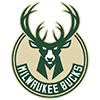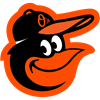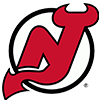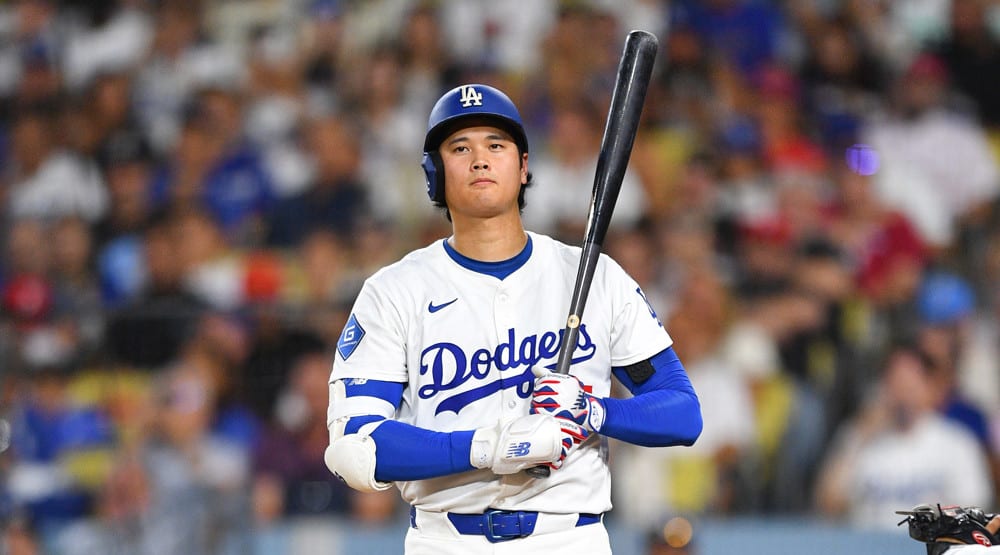Spotting High Ceiling and Avoiding the Frauds
A couple of years ago I was asked an intriguing question I really hadn't considered before, but I think it deserves to be reviewed again since I now often get asked variations of the same inquiry. The person wanted to know if I find it easier to spot the guys with a very bright future, or was it easier to spot the "flavor of the month" that everyone is talking about but who will soon fade into obscurity. I (and you) see both all the time, but I had never thought about which was easier to identify. To be honest, when I thought more about it, the answer(s) even surprised me a bit. So, let's take a look:
That guy they recalled was a monster last night, should I pounce?
The answer to the question actually turned into two answers - I think it's easier to spot high ceiling, but easier predict low ceiling. That may sound like a contradiction, but when you think about it, you can usually see signs that suggest a pitcher could be very good at some point in the future, however reaching that point will often require many refinements and even the addition of skills before it can happen. Since so many things can change along the path - injuries being a big factor, but certainly not the only one - you do take a calculated risk every time you predict great things for a player. I can
Spotting High Ceiling and Avoiding the Frauds
A couple of years ago I was asked an intriguing question I really hadn't considered before, but I think it deserves to be reviewed again since I now often get asked variations of the same inquiry. The person wanted to know if I find it easier to spot the guys with a very bright future, or was it easier to spot the "flavor of the month" that everyone is talking about but who will soon fade into obscurity. I (and you) see both all the time, but I had never thought about which was easier to identify. To be honest, when I thought more about it, the answer(s) even surprised me a bit. So, let's take a look:
That guy they recalled was a monster last night, should I pounce?
The answer to the question actually turned into two answers - I think it's easier to spot high ceiling, but easier predict low ceiling. That may sound like a contradiction, but when you think about it, you can usually see signs that suggest a pitcher could be very good at some point in the future, however reaching that point will often require many refinements and even the addition of skills before it can happen. Since so many things can change along the path - injuries being a big factor, but certainly not the only one - you do take a calculated risk every time you predict great things for a player. I can see the potential for a high ceiling, but I spend even more time uncovering all of those countless low ceiling arms as I attempt to avoid the trap.
So, here, I want to focus on predicting low ceiling. That continues to be the age-old trap for fantasy owners. It's that honeymoon or halo effect that confuses things. When a pitcher comes up for the first time, or even after the first time if he hasn't been in the big leagues for very many innings or hasn't pitched at that level for a long time, he has a built in advantage over the hitters. There are books on them, plus his veteran catcher, and his teammates can help fill in any blanks, so he can usually put together a game plan. If he executes that plan reasonably well, he is likely to have some success. But the clock is already ticking. From his first pitch, hitters begin studying him, and all the time they are looking for weaknesses they can exploit.
Most pitchers in the minor leagues won't turn into top tier starters in the majors. In fact, most of them won't have prolonged careers above the minor league level. That should set off alarm bells. If most of the guys coming up aren't going to be good enough to stay, I better be pretty selective when deciding which ones might be worthy of a spot on my fantasy team's roster. Once you've grasped that concept, you are way ahead of the game and should be better armed to identify the good ones while your opponents suffer from the fireworks created by the frauds.
Keep in mind, these low ceiling guys can sometimes offer some value. They might make quite a splash when they first arrive, especially if they are aided by a very deceptive delivery that could take hitters a bit longer to figure out. Watch closely and evaluate the likelihood that any success will last, and if you don't see it happening, be ready to pull the chute quickly. Probably the most dangerous part of catching a ride with a low ceiling newcomer is not jumping off soon enough. Err on the side of caution. Start offering him around as soon as he gets a solid start or two in, and if your trading partner gets a good start or two out of him before the downfall, that's OK. They won't start avoiding you.
Separating the Good from the Bad, and the Ugly
• I love guys with pretty good stuff and excellent command, but when evaluating new arrivals, look for better than pretty good stuff. Velocity is a big factor and having both velocity and command brighten the outlook considerably. If a guy has trouble breaking 90 mph with his fastball, he isn't very likely to enjoy long term success. If success comes, it's usually later.
• One of the biggest keys to identifying the good ones is arsenal. Even when your guy can get it up there at 97 mph, if he has never discovered a change-up and/or couldn't throw a breaking pitch for a strike on a dare, he's very unlikely to be successful. As soon as hitters figure out that fastball is all he has, they will sit on it and tee it up. You need at least three quality pitches at the major league level.
• Earlier I mentioned deceptive deliveries. If a pitcher with average stuff comes up and delivers pitches from an unusual arm slot or with a herky-jerky motion, it could take hitters a little while to catch on, but if it really is average or worse) stuff they will figure out the motion and it can get really ugly. Interestingly, adjusting is a big part of hitting. The best hitters will adjust to the deceptive delivery in just a couple of at bats while less accomplished hitters will often need longer.
• Pedigree is something you really should check. It is very rare for a 33rd-round draft choice to become an elite pitcher in the major leagues. It happens occasionally, but it is more likely to be tied to something unusual like a change to pitching after being drafted as a position player. I frequently see pitchers with exceptional pedigrees (first round draft choices, etc) who don't fulfill their promise but it's far more surprising to see a late round choice make it big.
• One thing I always like to share when discussing ceiling. When you identify a pitcher with high ceiling, and you have done it with enough accuracy to be confident in your analysis, be patient! Blue chip success doesn't happen overnight - at least not in most cases - so be prepared to give your guy time to develop. Just be careful. If too many guys are making your cut and then not panning out, you may need to tighten your parameters a bit.
Some Notable Rotation Ramblings
• Only one start. That's all it took for the Jeff Samardzija (now 1-4, 1.07, 1.68) Watch to come to an end here on the Musings. His mates got him eight runs in his 11th 2014 start and he came away with an 8-4 win over the Giants. And, he notched a season-high 10 strikeouts for good measure.
• Uh oh. I have bumped into a string of dysfunctional elbows among my blue chip prospects. First my top guy Jameson Taillon went under the knife and now my number two Noah Syndergaard is on the minor league disabled list. Still waiting on word regarding severity of the injury.
• In what has become the ongoing tale of elbows in distress with exciting young pitchers lining up for MRI's, add Yordano Ventura to the list. He left his last start in the third inning with discomfort in his elbow and while it's not a UCL injury, it will require him to modify his pitching approach. Time will tell how he adjusts.
Any given period of time will see pitchers arriving. Some will raise eyebrows, but guys like Jacob DeGrom, Chase Anderson, and Brandon Workman aren't likely to help you win. Wait for the real deal. My most anticipated arrivals, after the string of injuries, include Alex Meyer and Kevin Gausman.
• With both Andrew Cashner and Robbie Erlin hurt the Padres would love to have Casey Kelly step in for a look, but he's not ready yet. His recovery from Tommy John surgery has been longer than expected and they won't want to rush him. He has significant upside if he can get and stay healthy.
• The Astros' Dallas Keuchel is becoming one of those anomalies to me. He appears to be hittable, but opponents aren't hitting him. I like his command of the strike zone, but I don't think he's going to continue getting outs at his current pace. Occasionally one will fool me, but he doesn't excite me.
•Clay Buchholz is a mechanical nightmare right now. He's not staying on top of the ball, he's missing the strike zone, let alone his target, and when he does get one over the plate it's likely as not to be center cut. The Red Sox are saying it's a minor knee ailment, but he hasn't been right in quite awhile.
Endgame Odyssey
The White Sox are calling Ronald Belisario their closer, but he's been opening and not closing ninth inning floodgates. They simply don't have a viable closer on the roster and it could easily become a true committee with Jacob Petricka and maybe Daniel Webb getting involved. ... Jason Grilli is back in Pittsburgh after a stint on the disabled list, and the Pirates have already shown they are confident he can close out games. That said, the Pirates have the luxury of a second closer in their bullpen so expect to see Grilli's workload monitored with Mark Melancon picking up more opportunities than normal. ... I'll be curious to see how the Cardinals handle Jason Motte. His velocity is still down a bit and I don't see him taking the job back from Trevor Rosenthal so do they slot him into a set-up role or peddle him to one of many teams who would love to acquire a closer with experience. ... Zach Britton is really embracing his new closer gig in Baltimore, and I don't see him giving it up. I'm a little surprised the Orioles took him out of their future rotation plans, and if he gives up closing, going back to starting would be the most likely reason, but he fits right where he is. ... The Mets settled on Jenrry Mejia, at least for now, and he makes a strong case as long as they aren't tempted to move him into the rotation. Most of the pretenders are now gone so the only real threats are Jeurys Familia and Vic Black, and Black will need to show he can throw strikes over an extended audition before he would receive serious consideration.



























